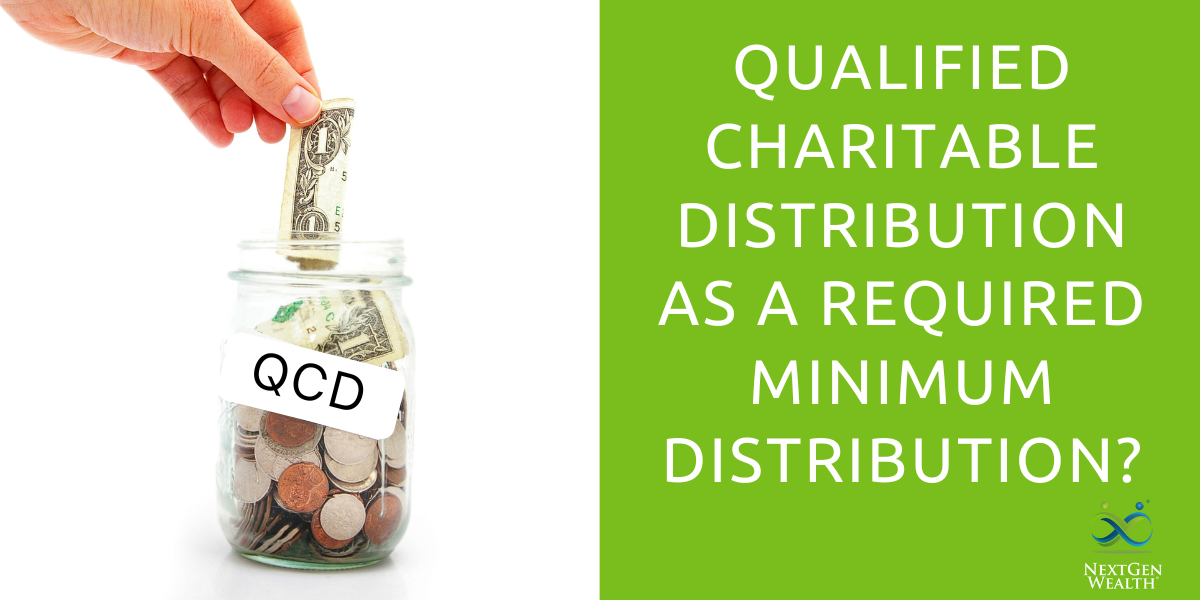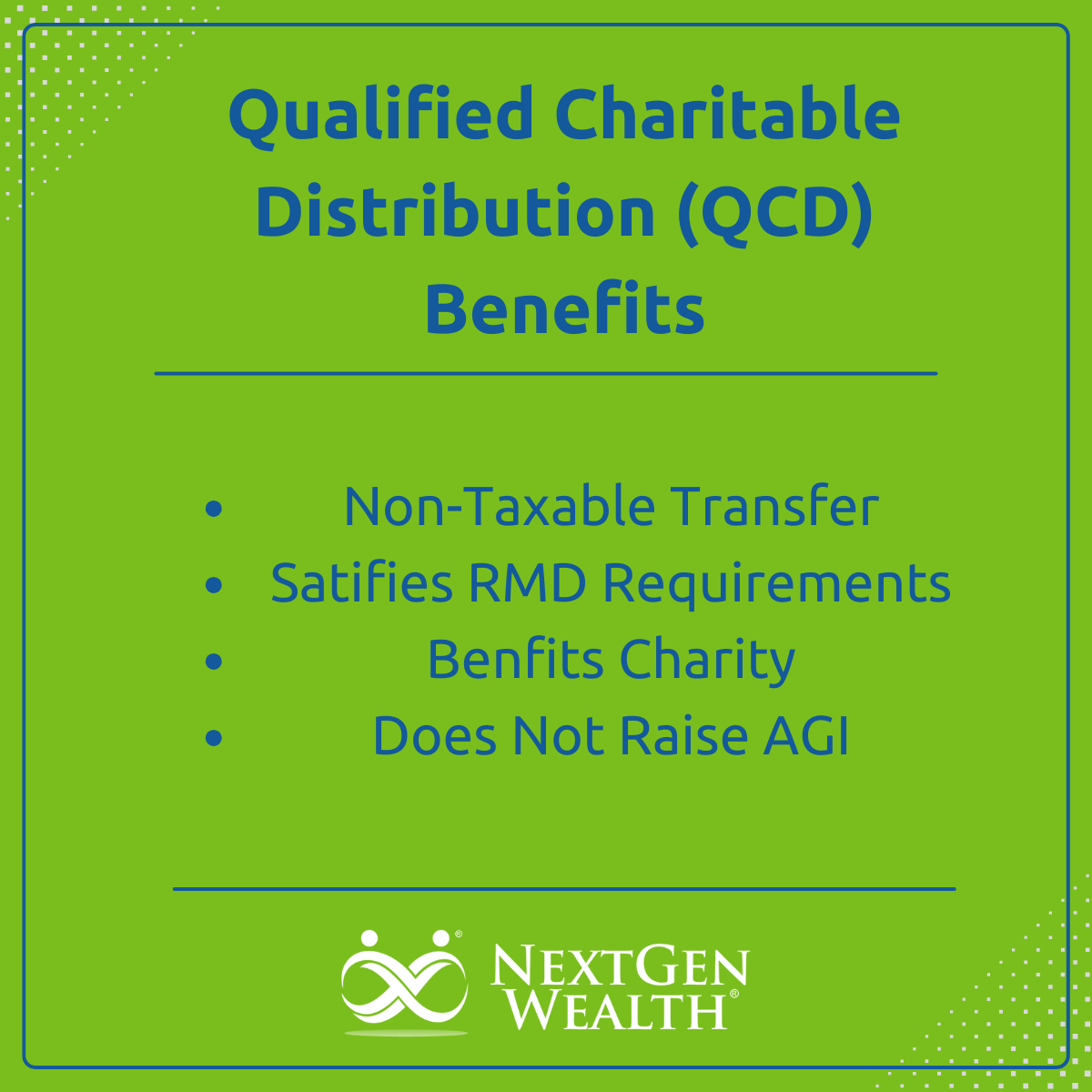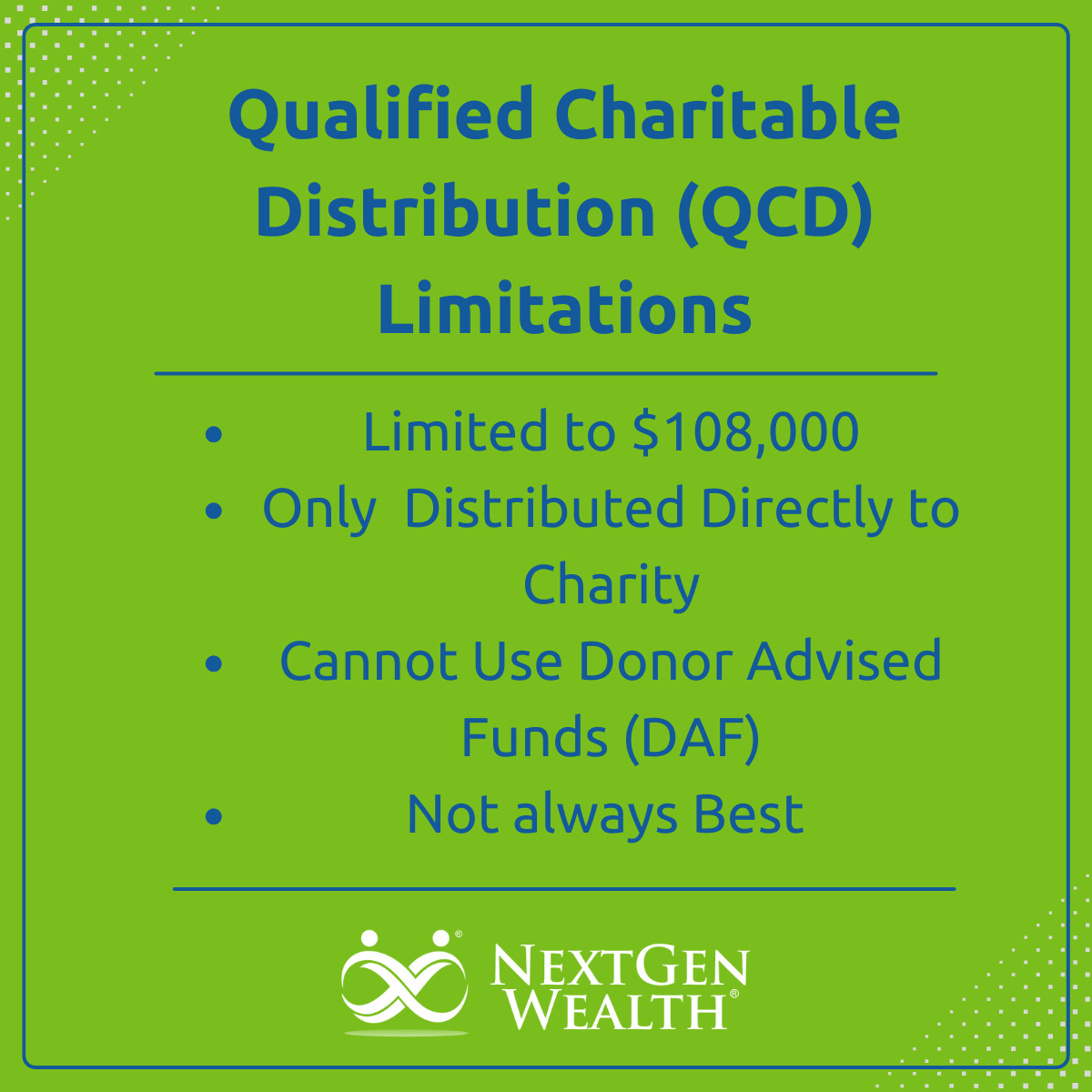Qualified Charitable Distribution as a Required Minimum Distribution?

This post was last updated on January 07, 2025, to reflect all updated information and best serve your needs.
If you’re required to take Required Minimum Distributions (RMDs), then knowing your options is important. Qualified Charitable Distributions (QCDs) are a useful tool to keep in mind.
You need to know the benefits and drawbacks of QCDs if you’re already taking RMDs or anticipating doing so. Let’s discuss what QCDs are and whether they should be in your arsenal of tax fighting weaponry.
Required Minimum Distributions (RMDs)
First, let’s talk about what RMDs are. Required Minimum Distributions (RMDs) are the minimum amount of money that you must withdraw from your retirement accounts each year. Otherwise, you’ll incur a penalty for not making the RMD.
This distribution is taxed as ordinary income just like any other distribution. This may not be an issue for you. However, the penalty for not withdrawing the proper amount is 25% of the money you failed to take out as a distribution. Yikes!
You want to be sure you’re taking out the proper amount. You can reduce the penalty if you correct the mistake of not taking your RMD in a "timely manner."
What Accounts Are Subject to RMDs?
In general, all retirement accounts except Roth accounts (thanks to the changes in SECURE 2.0) are subject to RMDs. This includes all “employer sponsored” plans like the 401(k), 403(b), 457(b), IRAs (including SEP, SIMPLE, and SARSEPs), and profit-sharing plans.
For the year in which you turn 73, you actually have until April 1st of the following year to take your first RMD. However, if you do choose to delay your first RMD to 4/1 of the next year, you will have to take your next RMD by 12/31 of that same year. After that, and each subsequent year, 12/31 is the RMD deadline.
Note: In 2033, the beginning age for RMDs will become age 75 - also due to the changes in Secure Act 2.0.
The Issue with RMDs
You might be wondering, “What’s the big deal?” You saved this money to spend in retirement, so why not use it? There are some potential issues.
For starters, you might just not need the money right now. You may be trying to employ tax saving strategies in retirement. If the markets are down, you might not want to withdraw much money, if any, from your portfolio. Also, you may have other income and RMDs would push you into a higher tax bracket.
All of these make RMDs a potential headache (and tax burden). So how do you avoid RMDs altogether?
How to Avoid RMDs
There are very few ways to avoid RMDs entirely. The most obvious are not saving any money for retirement (just kidding, NOT recommended!) or getting your retirement savings into a Roth IRA. There's another option we'll get to soon.
The most common way to get traditional retirement accounts into a Roth IRA is by doing Roth Conversions. This involves transferring money from your retirement account (IRA, 401(k) accounts), 403(b), 457(b), etc) into a Roth IRA. You pay taxes in the year of the transfer, the money in the Roth IRA grows tax free, and you avoid RMDs.
Exception to the Roth IRA Exemption for RMDs
There is one exception to the rule for Roth IRAs to be exempt from RMDs (isn’t there always one?). An inherited Roth IRA is subject to RMDs. The beneficiary does have some additional options for distributions though.
Regardless, distributions must start no later than December 31st the year after the original account holder passed away or would have reached age 73.
I Can’t Avoid RMDs
Let’s say that you can’t avoid RMDs altogether for one reason or another. Now what?
You will have to take distributions from the account no matter what. However, there is a way to withdraw money from the account without paying taxes – enter the Qualified Charitable Distribution (QCD).
Qualified Charitable Distributions (QCDs)
The Qualified Charitable Distribution (QCD) is pretty much exactly what it sounds like. It’s a charitable contribution that also qualifies toward your Required Minimum Distributions for the year. QCDs are made directly to your charity of choice.
There are several rules surrounding QCDs, but they can be a helpful tool if:
- You’re already planning on giving to charity (including a church) and would do it anyway
- Your accounts are subject to RMDs
The basic criteria to be considered a QCD are that you make the distribution from your retirement account directly to a qualified charity and are over the age of 70-1/2. The maximum you can contribute as a QCD for 2025 is $108,000 each year ($216,000 if married filing jointly).
The key thing is that the money goes directly to the charity. You can’t take the distribution and then donate it to charity.

Benefits of the QCD
The main benefits of the QCD are:
- Non-taxable transfer
- Satisfies the RMD requirement
- Benefits your charity of choice
Non-taxable Transfer
Since the money is sent directly to the charity, it is not taxed. Normally, if you take a distribution and donate it to the charity, then your original distribution is subject to your normal income tax rate. If a qualified charity receives the money via QCD, you are not taxed, and it doesn’t raise your Adjusted Gross Income (AGI) either.
The fact that a QCD doesn’t raise your AGI is an important distinction. Your AGI is used to determine many different tax rates as well as your Medicare Part B premiums. If you’re already at the limits for these, then a QCD may be beneficial.
Satisfies the RMD Requirement
Even though you didn’t receive the money directly, the distribution still counts toward your required distribution amount. This meets the IRS requirements in part or in full. You don’t have to use the QCD to satisfy the RMD requirement in full.
Example: If your RMD was calculated at $20,000 for the year and you made a QCD of $10,000, you can make a normal distribution for the remaining RMD of $10,000.
Benefits Charity
This might be the most obvious benefit of the QCD. If you can help one of your favorite charities and avoid paying taxes, it really is a win-win!

Limitations of QCDs
There are some notable limitations for QCDs. These are:
- Limited to $108,000
- Limited to qualified charities only (no Donor Advised Funds (DAFs))
- Can only be distributed directly to a qualified charity
- Might not always be the best strategy for minimizing RMD impact
Limited to $108,000
Although this doesn’t seem like a huge problem, it can be limiting in some instances. Keep in mind that spouses can combine their QCD limit if they file jointly.
Qualified Charities Only
The specification that the QCD must go to a qualified charity directly can be restrictive. You cannot contribute to a Donor Advised Fund (DAF) to qualify as a QCD.
Not Always the Best Strategy
Overall, there could be more tax-efficient strategies like donating appreciated securities from a taxable account. This is going to depend on your situation. If you don’t have appreciated securities to donate, this is a moot point.
Should I Make a QCD?
Without knowing your situation, it’s hard to tell. There are a multitude of options for how to give to charity. The QCD is more helpful in situations where you don’t want to incur RMDs and don’t want to raise your taxable income.
You should pay particular attention to QCDs if you are close to the income limits for capital gains tax, income tax, or Medicare Part B premium rates. Your AGI is also important if you're subject to the Net Investment Income Tax (NIIT) of 3.8%.
A QCD is useful if your RMDs will raise your Adjusted Gross Income (AGI) above these thresholds, you don’t need the money, and you don’t have other preferred options available. If giving to charity is a goal, you should be aware of how each method of giving affects your entire financial picture.
Good Tool When Needed
Overall, the Qualified Charitable Distribution is a useful tool. You may never want or need to use this strategy, but you never know. The primary line of defense against RMDs is going to be dialing in your income and utilizing Roth conversions.
However, everyone’s situation is different. If you’re up against a 25% penalty, having additional options like the QCD is super helpful!


